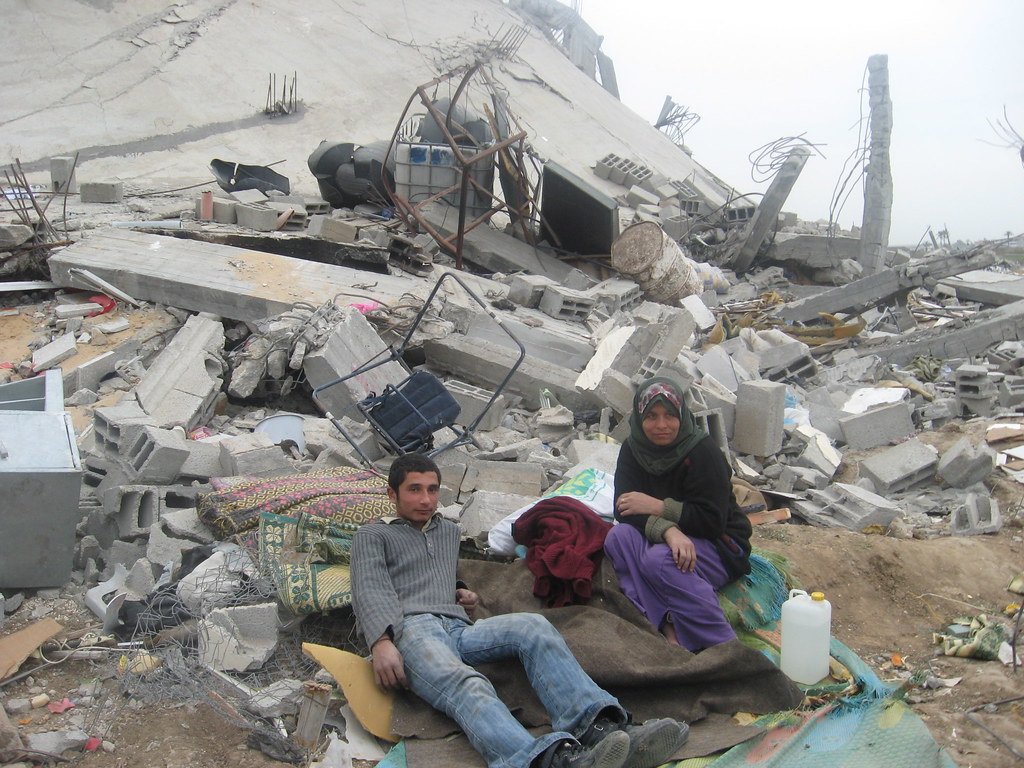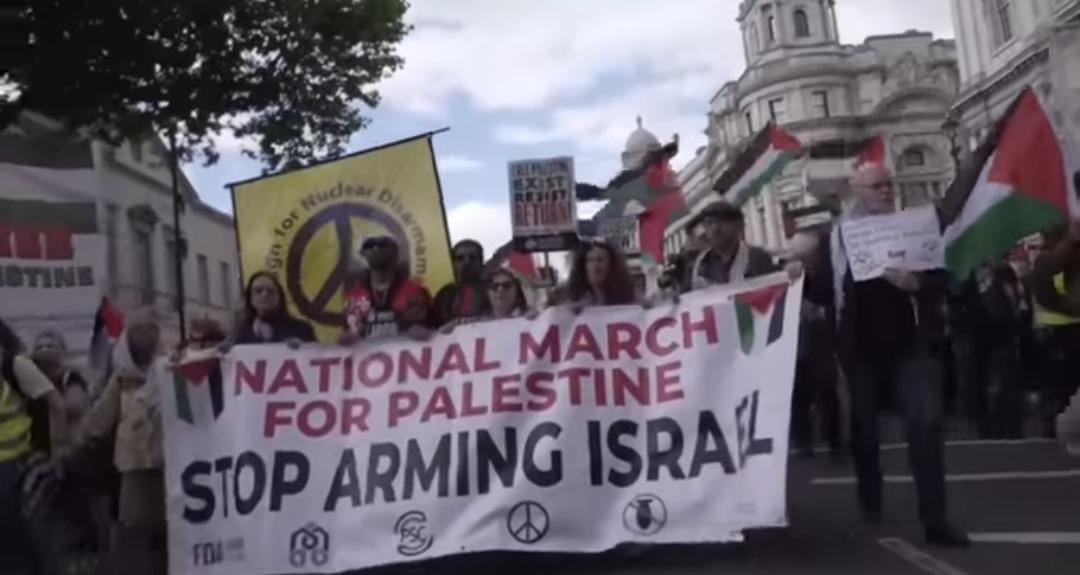2.2 Million People in Gaza Are Being Confined to a Humanitarian Area smaller than Size of Manhattan while the Israel Defense Forces’ campaign of military violence seems to have no end, the humanitarian condition in Gaza has hit a crescendo. According to the United Nations, the safe zone in Gaza has been shrunk to merely 11% of the land. The progressive reduction has squeezed Gaza’s 2.2 million residents into an increasingly crowded and untenable humanitarian condition, culminating in a rising humanitarian crisis.
August Evacuations Drastically Reduce Gaza’s Safe Zones, Displacing Thousands into Overcrowded Areas
In August alone, the IDF issued 12 orders to evacuate, including one Saturday afternoon that forced perhaps 250,000 people to flee yet again. As many as 11 previous times, such evacuations have shrunk—radically—from 33 percent of the area of Gaza from January to only 15 square miles—the approximate two-thirds the size of Manhattan.
As the U.N. reported, this fracturing safe zone has led to massive population movements toward such areas as Muwasi, a former fishing village now overrun with displaced people living in tents, and another area known as Deir Al-Balah, located in central Gaza. The humanitarian zones are now so jammed that residents face severe shortages of basic necessities, including clean water.
According to the IDF, the eviction orders are carried out to protect civilians from rocket and mortar attack that have been launched from some of these areas. The military says it modifies humanitarian zones based on security needs but tries as much as possible to reduce civilian casualties. The justification has attracted criticism from different quarters.
The IDF has been accused by the Hamas government media office of “deliberately suffocating” the Palestinian people, trapping them in “narrow, inhumane areas” in which human life cannot possibly survive. The re-mapping of designated safe zones and the rapidity with which evacuation orders change have only furthered to confuse the people and create chaos.
United Nations Relief and Works Agency spokeswoman Louise Wateridge said the evacuees “are going through a horrific time”. They say the evacuation orders are almost being changed by the hour and you either have to turn up and run with whatever little you can carry. Wateridge added, “There is lot of confusion and panic”. She further said Military actions are often following the evacuation orders, sometimes within 30 minutes.
The IDF did not respond to questions on the narrow window of time allowed for evacuations, nor on how the overcrowded situation compromises mains services and public health. The U.N., though says that after the conflict began, 90 percent of Gazans have been ordered to evacuate, often multiple times.
One of the poignant examples of the human cost of this crisis is epitomized in the life of Doaa Qeita, a mother of three. Her family has had to move “at least seven times” since the beginning of the conflict. “My baby, who was born on January 10, has been displaced seven times in seven months,” Qeita said, reflecting the relentless and traumatic upheaval of many families.
Recent IDF evacuation orders have also focused on apparently unfamiliar areas—never having been under military operations before—like Khan Younis and eastern Deir Al-Balah. The IDF claims that such areas were said to be “dangerous” because of “significant acts of terrorism “, like rocket fire comes from Khan Younis.
So the scenario keeps changing: what is conflict zone and what is safe zone? This has led to terrible happenings. At least seven people, including two kids and five women, were killed last week following an Israeli tank strike on the Bani Suhaila district in Khan Younis. The eyewitnesses and survivors said they believed they were in a safe zone when the tank struck. “There isn’t any ‘safe zone’ so far in the entirety of Gaza,” he added, Ahamed Samour.
The overcrowded conditions in the few remaining humanitarian zones are generating a public health emergency. Adnan Abu Hasna, another UNRWA spokesman, referred to the displaced population as “chess pieces” in a game as cases of diseases such as hepatitis C and polio continue to mushroom. The U.N. reports that a 10-month-old baby has been partially paralyzed by polio, a disease that had been eradicated in Gaza for 25 years. Secretary-General António Guterres said in a statement, “Hundreds of thousands of children in Gaza are now at risk of polio infection from deteriorating hygiene conditions”.
With these ever-increasing challenges, the international efforts to slough a cease-fire mount. US President Joe Biden has underscored the pressure being put on getting a cease-fire and the release of hostages being held by Hamas. He has been in consultation with Israeli Prime Minister Benjamin Netanyahu and Qatari and Egyptian leaders—with the latter taking place in Cairo.
Despite these efforts, however, the conflict shows no sign of dropping off. Israeli diplomats are supposed to travel to Cairo for more talks; fighting, however is looking very much on the increase along the Lebanese-Israeli border with Hezbollah, also an ally of Hamas, supported by Iran.
An expert with the Carnegie Endowment for International Peace, H.A. Hellyer, said how low expectations of the truce were. “I don’t think those negotiations were really going anywhere anyway,” he added, saying the continuing violence could undo the little progress being made in the talks.
Citing local health authorities, the hostilities have already claimed over 40,000 and wounded as many as 90,000 others. The toll ramped up after Hamas attacked on October 7, killing some 1,200, including a vast majority of 790 civilians, and taking about 250 hostages.
The Secretary of State, Antony Blinken, explains that in the recent visit to the Middle East the negotiations are at a “decisive moment,” focusing on avoiding steps that would endanger the process of working toward a cease-fire. The rest of the world is an interested observer as the parties at the table look for closure amidst a general scene of rabid violence and continuing displacement.
And while there were ongoing rounds of negotiations, the humanitarian crisis in Gaza saw tens of thousands of people on the road trying to escape the conflict to find some safety. With the IDF issuing yet another warning for evacuations in a few municipalities, the crisis in Gaza looks to be far from having a solution.




One thought on “2.2 Million People in Gaza Trapped in Overcrowded Humanitarian Area Smaller than Manhattan”